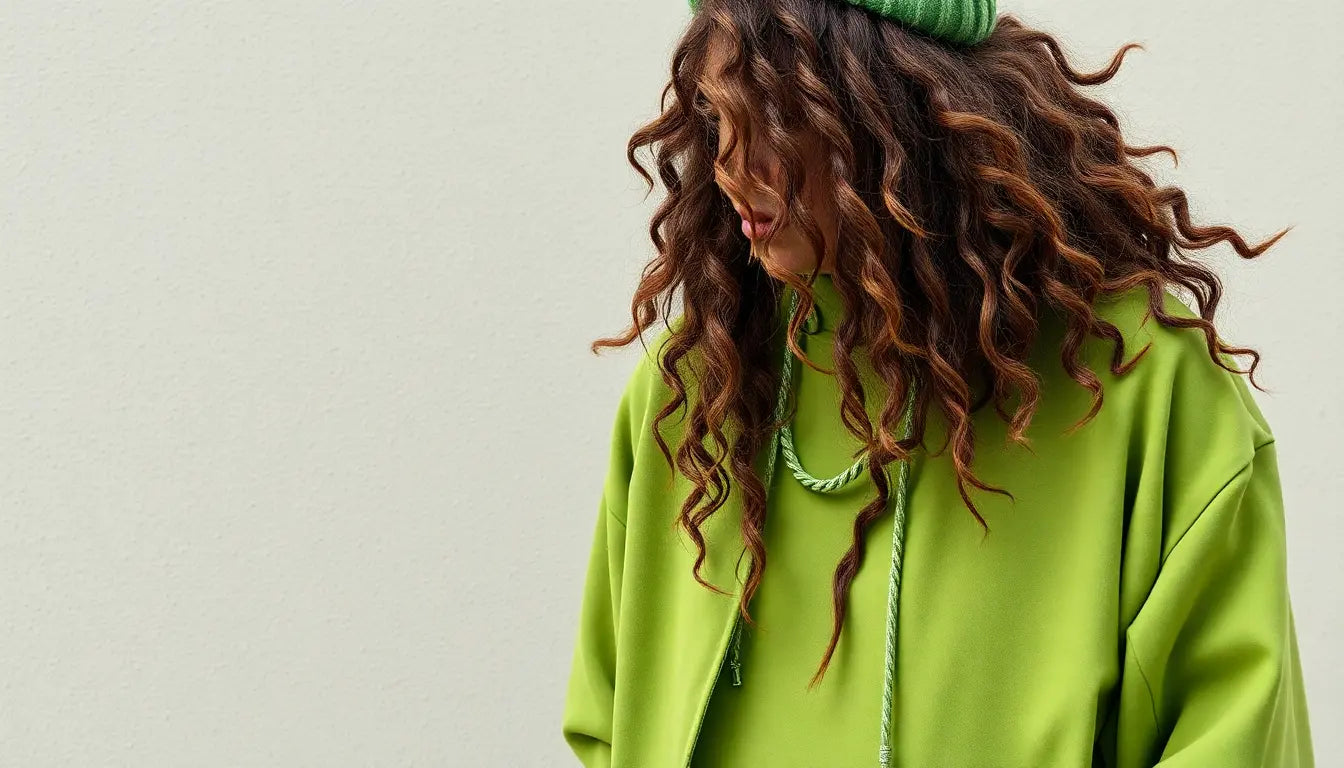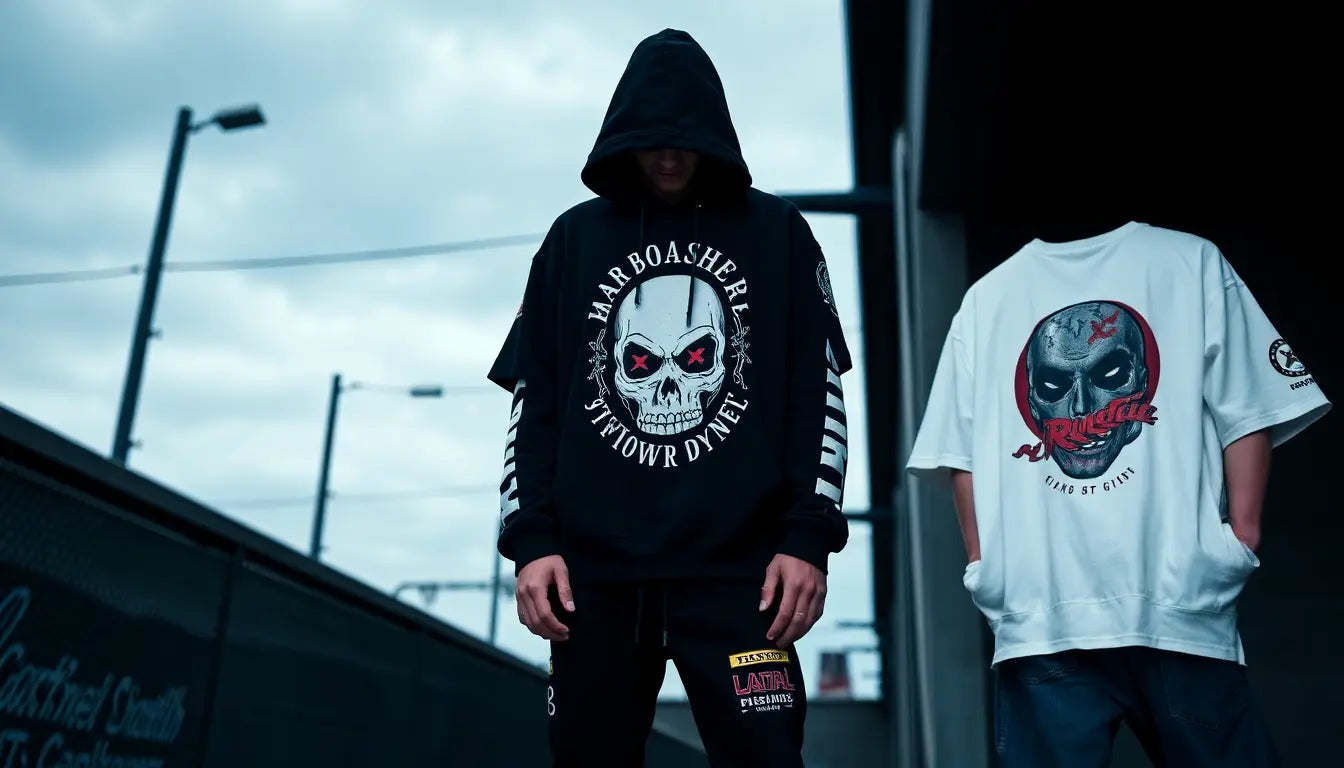
Tommy Lee Sparta Merch Goes Green: How His Dancehall Streetwear Is Pioneering Sustainable, Ethical Production
Introduction
Tommy Lee Sparta merch is increasingly associated not only with bold graphics and dancehall energy but with a growing commitment to sustainable, ethical production. In a streetwear landscape where fans expect authenticity from artists and brands, going green is more than a trend — it’s a long-term strategy that protects the planet, supports workers, and strengthens brand credibility.
Why This Matters for Dancehall Streetwear
Dancehall fashion is a cultural expression: it tells stories, signals identity, and moves with the music. As global awareness of environmental and social impacts rises, fans are asking for merch that aligns with their values. Sustainable streetwear reduces environmental harm from textiles, curbs wasteful production cycles, and ensures fair labor practices — all of which matter to culturally conscious consumers.
What “Going Green” Means in Practice
For a merch line to be meaningfully sustainable, changes must happen across the product lifecycle. Key areas include:
- Materials: Choosing low-impact fibers such as organic cotton, hemp, Tencel, and recycled polyester.
- Production processes: Employing low-water dyeing, water-based inks, and energy-efficient machinery.
- Labor and transparency: Partnering with audited factories that respect wages, hours, and safety.
- Packaging and logistics: Using recyclable or compostable packaging, and optimizing shipping to reduce emissions.
- Product lifecycle management: Encouraging repair, resale, and recycling to extend garment life.
How Tommy Lee Sparta’s Streetwear Can Implement Sustainable Materials
Material choice is the foundation of green merch. Practical options include:
- Organic cotton: Grown without synthetic pesticides and often using less water than conventional cotton when managed responsibly.
- Recycled polyester: Made from post-consumer plastic bottles; helps reduce reliance on virgin petroleum-based fibers.
- Hemp and linen: Naturally durable fibers that require fewer inputs and produce long-lasting garments.
- Tencel/Lyocell: Regenerated cellulose fiber made in closed-loop processes with wood pulp from sustainably managed forests.
- Low-impact blends: Thoughtful blends that balance performance, comfort, and environmental impact.
Eco-Friendly Printing, Dyes, and Trim Choices
Graphics are central to artist merch. Sustainable printing techniques preserve style while reducing harm:
- Water-based inks and discharge printing: Lower chemical load and softer hand-feel than plastisol inks.
- Digital Direct-to-Garment (DTG): Reduces waste for small runs and allows detailed designs with fewer screens.
- Low-impact reactive dyes and natural pigments: Minimize water pollution and harmful effluents.
- Biodegradable labels and recycled or compostable hang tags: Keep trim aligned with sustainability goals.
Ethical Manufacturing: Beyond the ‘Made In’ Tag
True sustainability includes human rights. Ethical manufacturing practices should cover:
- Living wages and fair contracts for garment workers.
- Safe working conditions and reasonable work hours.
- Supplier audits and continuous improvement plans.
- Local or regional manufacturing where feasible to lower transport emissions and support communities.
Supply Chain Transparency: Traceability and Verification
Consumers want proof. Brands can provide transparency through:
- Material passports and batch traceability that show where fibers come from.
- Certification badges (GOTS, OEKO-TEX, Fair Trade, FSC for packaging) with verifiable links or QR codes.
- Public supply chain maps that list factories, partner mills, and their audit results.
- Third-party verification and periodic impact reports to build trust.
Design Philosophy: Longevity Over Fast Drops
Sustainable design opts for timelessness and quality over disposable trends. For artist merch, this can mean:
- Classic silhouettes with graphic accents that remain relevant across seasons.
- Higher-quality construction that resists wear and tear.
- Versatile pieces that integrate into everyday wardrobes, increasing use and reducing turnover.
- Limited-edition drops paired with pre-orders to avoid overproduction.
Economics: Pricing, Cost, and Accessibility
Green production often costs more up front. The challenge is balancing sustainability with accessibility for fans:
- Transparent pricing approaches can explain why a garment costs more (materials, wages, traceability).
- Tiered product ranges: core sustainable staples at lower price points and premium limited pieces for collectors.
- Collaborations and sponsorships can subsidize costs and scale sustainable practices.
Marketing and Storytelling: Communicating Sustainability Authentically
How sustainability is communicated matters as much as the actions themselves. Effective tactics include:
- Educating fans on the meaning of certifications and the benefits of chosen materials.
- Using behind-the-scenes content (factory visits, designer interviews) to build authenticity.
- Highlighting real impact metrics (water saved, CO2 reduced, number of workers supported).
- Avoiding vague claims — be specific about processes, partners, and timelines.
Digital Tools and Tech for Sustainable Merch
Technology can reduce waste and increase transparency:
- Pre-order platforms and demand forecasting reduce unsold inventory.
- Blockchain or secure ledgers for immutable traceability records.
- Lifecycle assessment (LCA) tools to measure environmental impacts across production.
Collaborations and Community Impact
Partnering with local artisans, sustainable textile innovators, or environmental NGOs can magnify impact:
- Community-based production supports local economies and cultural authenticity.
- Collaborations with textile recyclers or repair initiatives keep garments in use longer.
- Giving a portion of proceeds to environmental causes creates tangible community benefits and aligns fans behind a mission.
Case Study Ideas: What Success Could Look Like
Here are hypotheticals and blueprints that show measurable success if implemented thoughtfully:
- Limited organic cotton hoodie drop sold by pre-order, resulting in zero deadstock and a documented 30% reduction in water use compared to conventional hoodies.
- Caps produced from recycled PET with biodegradable tags, with shipping packaged in compostable mailers — reducing plastic by 90% per unit.
- Partnering with a Jamaican or Caribbean textile mill to produce small-batch items locally, cutting transport emissions and supporting jobs.
How Fans Can Support the Green Shift
Fans play a vital role. Practical ways they can support sustainable merch initiatives include:
- Buying from official channels to ensure authenticity and support the correct supply chain.
- Choosing quality over quantity and prioritizing pieces designed for longevity.
- Caring for garments properly (cold wash, air dry, repair) to extend life.
- Reselling or donating items rather than sending them to landfill.
How to Spot Authentic Sustainable Tommy Lee Sparta Merch
Beware of greenwashing. Look for clear signals:
- Specific material descriptions: "GOTS organic cotton" or "certified recycled polyester" rather than vague "eco" claims.
- Certification logos with links to verifiable certificates.
- Detailed product pages that list factory partners, production dates, and care instructions.
- Official purchase channels (verified store pages, artist announcements) and batch verification like QR codes.
FAQ: Common Questions About Sustainable Artist Merch
-
Q: Is sustainable merch more expensive?
A: Often yes due to higher material and labor costs. However, transparent pricing helps fans understand what they're paying for. Value also comes from longer-lasting garments.
-
Q: Will sustainable materials change the design or comfort?
A: Not necessarily. Many sustainable fibers (organic cotton, Tencel) offer equal or better comfort, and modern recycled fabrics perform well in streetwear contexts.
-
Q: How can I verify sustainability claims?
A: Look for certifications (GOTS, OEKO-TEX, Fair Trade), QR code traceability, or third-party verification and impact reports.
-
Q: Are small-batch drops always better?
A: Small batches reduce overproduction but can increase per-unit costs. Pre-orders are a strong alternative to align supply with demand.
SEO and Content Strategy: Making the Message Discoverable
To rank well and reach fans seeking sustainable streetwear, content should be optimized. Best practices include:
- Keyword focus: target phrases like "Tommy Lee Sparta merch sustainable", "dancehall eco streetwear", "ethical artist merch", and long-tail queries like "how to verify sustainable merch Tommy Lee Sparta".
- Use clear H2s and H3s for search engines to parse topical structure.
- Create FAQ schema on product and blog pages to surface in rich results.
- Optimize page speed and mobile experience — many fans discover merch via social links and mobile searches.
- Link to authoritative resources (certification bodies, sustainability studies) to support claims.
Potential Challenges and How to Address Them
Transitioning to sustainable merch has hurdles. Anticipate and mitigate these:
- Higher upfront costs: Use transparent communication and staggered product tiers.
- Supplier availability: Build long-term partnerships and diversify sourcing to avoid bottlenecks.
- Scaling responsibly: Prioritize supply chain audits and technology that supports traceability as production grows.
- Consumer education: Invest in storytelling and behind-the-scenes content to explain tradeoffs and value.
Roadmap: A Practical Timeline for a Green Shift
A phased approach helps manage costs and complexity:
- Months 0–6: Audit current suppliers and materials; pilot a single sustainable product (e.g., organic tee).
- Months 6–12: Introduce traceability (QR codes), expand sustainable basics, and start small-batch local production where possible.
- Year 2: Publish an impact report, secure certifications for core lines, and launch repair/resale programs.
- Year 3+: Scale successful practices across the full range; set science-based targets for emissions and waste reduction.
What This Means for the Broader Industry
Artist-led brands shifting toward sustainability can influence producers, fans, and other musicians. Cultural leaders adopting ethical production often accelerate industry-wide change through collaborations, spotlighting suppliers, and normalizing transparency.
Conclusion: Style, Substance, and Stewardship
Tommy Lee Sparta merch going green represents an opportunity to merge cultural relevance with real-world responsibility. By choosing sustainable materials, ethical factories, transparent supply chains, and thoughtful design, artist merch can retain its street credibility while reducing environmental impact and supporting workers. Fans win with higher-quality, longer-lasting pieces; the planet benefits from lower emissions and waste; and the music community gains a new standard for how cultural products are made.
Action Steps for Fans
- Buy from official channels and verify product details.
- Care for purchases to extend their life.
- Share verified sustainable drops on social media to amplify impact.
- Ask brands and artists for transparency — consumer demand drives change.
Suggested Meta Description and Keywords for SEO
Meta description suggestion (under 160 characters): "Discover how Tommy Lee Sparta merch is pioneering sustainable, ethical dancehall streetwear — materials, production, certifications, and where to buy."
Primary keywords: Tommy Lee Sparta merch sustainable, dancehall streetwear eco, ethical merch Tommy Lee Sparta.
Further Reading and Resources
- Global Organic Textile Standard (GOTS)
- OEKO-TEX Standard 100
- Fair Trade Textile standards
- Textile Exchange and lifecycle assessment (LCA) resources
Embracing sustainability in artist merch is a journey. For artists like Tommy Lee Sparta and their communities, it’s an opportunity to lead by example — creating streetwear that looks good, stands the test of time, and does better by the world.


